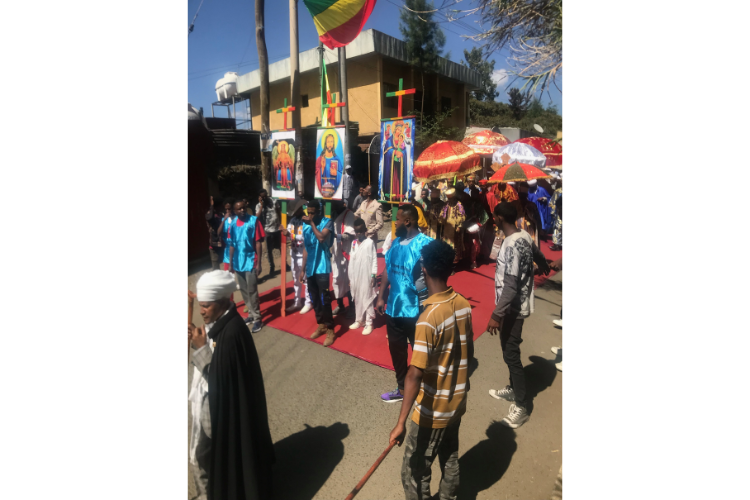Revisiting (With) Ethiopian Jewry

This article is written by TIJS core faculty member Don Seeman, Associate Professor of Religion and Jewish Studies
Last December I had the opportunity to visit Ethiopia for research for the first time since 1993. I was the lone American scholar invited to a first of its kind conference at the University of Gonder in northern Ethiopia: “Jerusalem and Ethiopia Over 3,000 Years.” Gonder University and a consortium of Israeli organizations led by Rabbi Dr. Sharon Shalom of Ono Academic College are creating a new Center for the Heritage of Ethiopian Jewry with the support of both governments. This was really an historic occasion. It was also a scene of contrasts that speak to what has changed in Ethiopian Jewish life over the past decades, and what has not.
Most Ethiopian Jews in Israel immigrated mostly from the Gonder region beginning in the late 1970’s, followed by two major airlifts known as Operation Moses (1984-85) and Operation Solomon (1991) with several smaller operations in between. Ethiopian Jews had to literally flee the country in which they were born in order to enjoy the freedom to live as Jews in Israel. Especially during the 1980’s, every family that left could tell harrowing stories about the dangers they faced and the heavy losses they incurred, often traveling hundreds of miles by foot over rough and dangerous terrain. “There was not a single household,” to quote the Bible, “in which there were no dead.”
It was profoundly moving to return to Ethiopia in 2023 as part of an honored academic group, proud of both what they had accomplished in becoming Israelis and of their Ethiopian heritage. Mr. Rahamim Elazar, the head of both Amharic and Tigrinya language radio in Israel, was an early leader of the Ethiopian Israeli community and someone I had listened to for many years. He was able to point out the same desk he sat in at the school in the village of Ambover years before. The school has been refurbished in part through cooperation with Ethiopians in Israel who contribute to the school in return ;for their cemeteries being cared for by the locals. With a colleague, I climbed to the top of the mountain on which Jews of the Ambover region had held their annual Sigd pilgrimage. Today the hill is overtaken by weeds and thistles but Sigd has recently been added to the official Israeli calendar of holidays. For some participants, this visit to Gonder was the closing of a long and painful circle starting in their childhoods. We were all received in Ethiopia with grace and warm hospitality.
At the same time, Ethiopia is a country at war with itself, and there were signs of that conflict everywhere. Today in Gonder city there is a kind of resettlement camp, as there was 25 years ago, where over ten thousand people and perhaps many more, I’ve been told, await the resolution of their immigration visas with Israel. I wrote about this issue in my 2009 book Ethiopian-Israelis and the Return to Judaism (Rutgers University Press). Why they are still waiting is a complicated question having to do with the politics of Jewish authenticity and Israeli immigration policies; the matter remains controversial in Israel and even among the Ethiopian-Israeli community. I spent Shabbat in the synagogue at the “compound” where I was able to speak with people informally and marvel at the teenagers (some of them fluent in Hebrew) leading afternoon Bnei Akiva youth groups for their younger fellows. This is a community that needs moral and financial support to survive and, most of all, a resolution to their ongoing political-bureaucratic limbo. They were not officially part of the conference on Ethiopian Jewish heritage yet they were only twenty minutes away by taxi and I felt their presence hovering over the proceedings.
It so happened that the conference also coincided with a major Christian holiday, Temkat, on which musical processions from Orthodox Churches march around the city dancing and carrying their Tabot (Tablets of the Covenant) before them joyously. In some places holy water is also sprinkled on the crowd. It was a riotous and overwhelming sensation of sounds and colors amidst the typically drab activities of a university conference.
Published 9/27/23